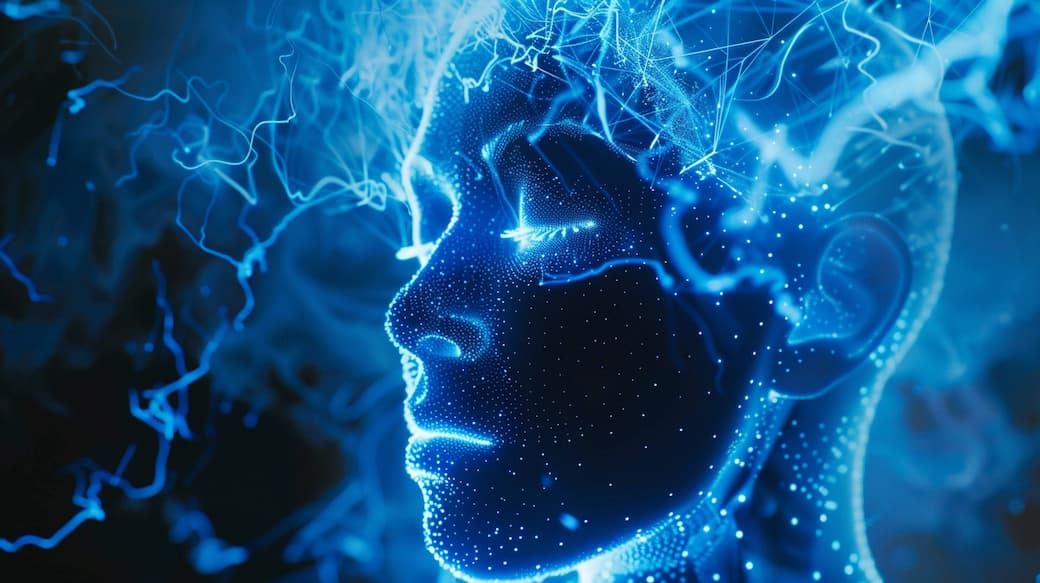
HRTF: Head-Related Transfer Function Shapes 3D Audio Hearing
Content
Ever wondered why you can pinpoint the location of a sound while wearing headphones? It’s largely thanks to HRTF, or Head-Related Transfer Function, a key player in creating three-dimensional audio landscapes. In this deep dive, we’ll explore how HRTF enables realistic sound localization in headphones and powers audio innovation in gaming and VR.
Key Takeaways
- HRTF (Head-Related Transfer Function) quantifies the unique ways an individual’s anatomy affects sound perception, allowing for the creation of a three-dimensional auditory space by utilizing ILD (Interaural Level Difference) and ITD (Interaural Time Difference).
- Measuring HRTFs presents challenges such as environmental noise and reflections, but advancements like the Multiple Exponential Sweep Method (MESM) and the normalized least mean square (NLMS) algorithm are improving accuracy and efficiency in the measurement process.
- HRTFs are integral to creating immersive audio experiences in virtual reality, gaming, and music production, and enhancing communication technologies by simulating precise spatial audio that corresponds with real-world sound localization.
Disclaimer: This article was generated by AI
The Science Behind HRTF
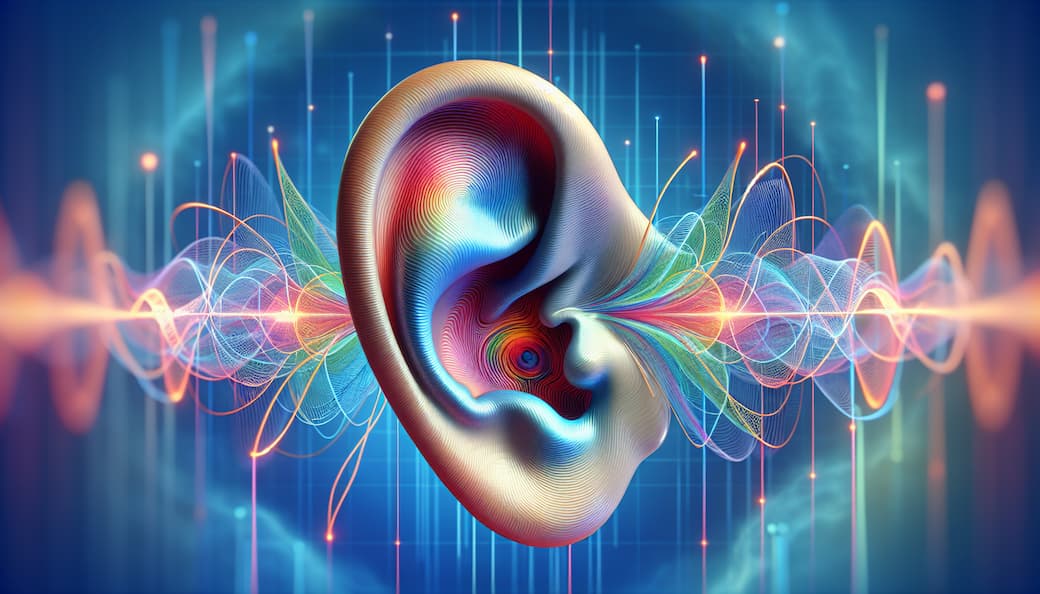
The head-related transfer function (HRTF) is centered around how the brain interprets sound. It considers individual differences in head and in ear canal size, as well as the time it takes for sound to reach the ears.
HRTFs quantify these anatomical factors’ impact on the incoming sound at your ear canals through a linear time-invariant (LTI) system known as a head-related transfer function alone.
To pinpoint a sound’s location, our brains use cues such as Interaural Level Difference (ILD), Interaural Time Difference (ITD), and unique filtering effects created by each person’s ear and head shape.
When combined, these variables create distinct frequency responses and head related impulse responses that help create an imagined virtual auditory space within our minds. Essentially, HRTFs are like paintbrushes used by our brains to transform just sounds into three-dimensional representations of our world!
Interaural Level Difference (ILD)
One important way in which we determine the direction of high-frequency sounds is through a cue called Interaural Level Difference (ILD). This occurs because our head acts as an obstacle that creates different sound levels at our left ear when left and right ears together, also known as a “sound shadow.”
As the frequency of a sound increases, this effect becomes more noticeable due to the higher frequencies being blocked more effectively by our heads. There is a greater level difference between the two ears.
It’s worth noting that ILDs can interact with another auditory cue, Interaural Time Differences (ITD), in determining sound source and direction within specific frequency ranges. This idea was first proposed by Lord Rayleigh and is referred to as the Duplex Theory.
By taking into account both ILD signal, and ITD cues for different, frequency response ranges used for localizing sounds around us can greatly enhance accuracy in pinpointing their origin or source.
Interaural Time Difference (ITD)
The Interaural Time Difference (ITD) is a crucial factor in the process of sound localization, which involves determining the direction and source of a particular sound. It refers to the difference in time that it takes for a sound to reach one ear compared to the other. ITDs are particularly useful for localizing low-frequency sounds below 1500 Hz as they provide cues based on phase differences.
When processing ITD, specialized neurons known as coincidence detectors play an important role. These neurons are most active when there is synchronization between auditory inputs from both the two ears together, helping with accurate perception of sound location by our brain.
The Brain’s Role in Processing HRTF
The ear canal plays a crucial role in the brain’s processing of head related transfer functions (HRTFs). By utilizing the modifications that occur as sound travels through our anatomy, particularly the shape and size of our heads, before reaching the outer ear and the ear canal itself, it is able to determine where a sound originates from.
This involves storing and recognizing characteristic changes caused by each individual’s unique head structure.
To accurately judge the location of a sound source in free field, information from both interaural time differences (ITDs) and interaural level differences (ILDs) of sound source is integrated by our brains.
Since most natural sounds consist of varying frequencies, this combination allows for more precise determination of sound source, despite any potential distortions caused by high or low frequency mixtures.
Measuring HRTFs: Techniques and Challenges
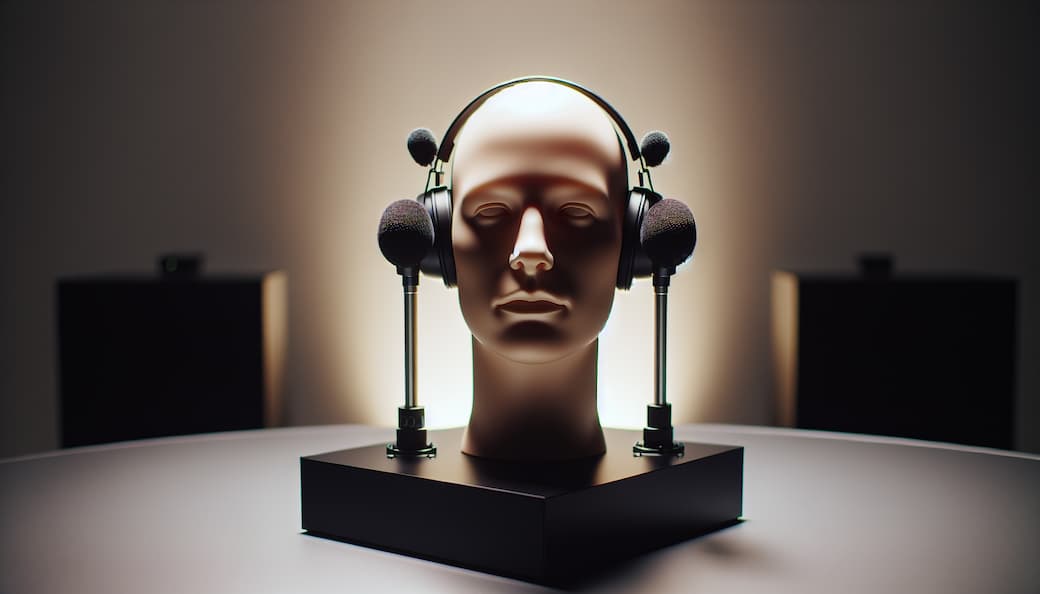
In order to accurately measure HRTFs, there are various methods that can be used such as deconvolution, adaptive filtering techniques, pseudo-random sequences and sweep signals. This process presents challenges due to non-linear distortions from the sound waves being capture in different directions and distances.
To address these issues more efficiently, the Multiple Exponential Sweep Method (MESM) and Continuous MESM have been developed using sequential or continuous sound waves as signals.
Despite advancements in measurement techniques for HRTF data, like the NLMS algorithm which uses an adaptive filtering approach to minimize errors and improve accuracy, it remains a time-consuming task due to the comprehensive nature of individual subject measurements.
Capturing precise information on diverse directions and distances involves dealing with ambient noises as well as environmental reflections making resources intensive too.
Dummy Head Recording
The Dummy Head Recording is a specific method used for HRTF measurements. It involves using a mannequin head with built-in microphones in each ear to replicate the way human ears receive sound. This dummy head usually imitates the shape and structure of an average person’s head, including features like nose and mouth.
Binaural recordings are created through microphones and this technique are specifically designed to simulate two-ear listening experiences, especially when using headphones. They may not accurately transfer over traditional stereo speakers due to factors such as multiple sound sources and microphones present during music recording which can impact overall sound quality.
Individual HRTF Measurements
Personalized measured HRTF measurements play a crucial role in creating an immersive audio experience because everyone’s head and ears have a unique shape and size. The use of generic HRTFs can result for example in diminished localization accuracy and decreased listener perception of externalization, negatively affecting the listener’s overall enjoyment.
Accurate individual HRTF measurements require installation of loudspeakers within anechoic chambers to minimize echoes and outside noises that could affect the results. A high signal-to-noise ratio is essential during these measurements, which relies on utilizing low-latency transmission signals, amplifiers with minimal noise output, and employing acoustic filtering techniques.
Fast HRTF Measurement Methods
In order to save time without compromising the quality of data, new methods for quick HRTF measurements have been developed. These techniques often involve multiple sound sources or continuous measurement in many locations in order to increase efficiency while still maintaining accuracy.
As a result of research on fast acquisition of individual HRTFs, various inventive setups have emerged with the goal of achieving high precision.
HRTF measurement setups that utilize multiple loudspeakers such as vertical arc, horizontal arc, and circular arc offer enhanced spatial density by altering the positioning of the subject. Read more on Personalized Spatial Audio.
Applications of HRTF in Audio Technology
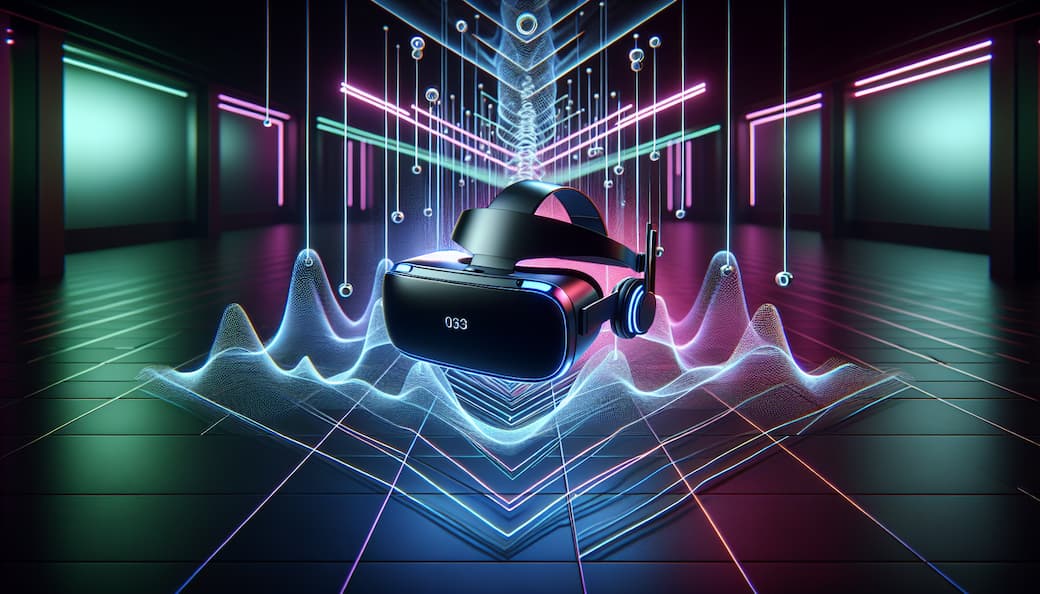
After exploring the science behind HRTF and its methods of measurement, it is now important to understand how it is applied in practical settings. The use of HRTF filters allows for the simulation of audio signals from any desired location, making them essential in various sound technologies.
Through binaural synthesis with HRTFs, our brains can process sound localization by incorporating the filtering effects caused by our head shape, ears and torso. Ultimately enhancing spatial perception.
By mapping left and right audio channels to virtual sources at specific elevations and angles creates an immersive auditory experience as different positions can be simulated from different directions within a given space.
This dynamic binaural rendering is especially beneficial for interactive applications where real-time tracking of listeners’ heads enables virtual sounds to appear from any direction relative to their position. Such a feature significantly contributes towards creating realistic surround-sound experiences that deeply engage listeners’ senses.
Virtual Reality and Gaming
In the realm of virtual reality and gaming, HRTFs are a game-changer. They provide accurate 3D sound localization, creating an immersive experience for users. For instance, in the popular game Valorant, players can enable HRTF in the settings menu.
Once enabled, players wearing headphones perceive audio cues from every direction, enhancing their ability to locate the precise origin of in-game sounds such as:
- footsteps
- reloads
- gunshots
- explosions
This technology greatly enhances the gaming experience and adds a new level of realism to virtual environments.
This accurate sound localization is pivotal for players, aiding in critical tactical decision-making and positional awareness during gameplay.
Music Production and Spatial Audio
HRTFs have also become a common tool in the music production industry. Music producers now utilize HRTFs to produce spatial audio effects, enhancing listeners’ overall musical experience with a heightened sense of three-dimensional sound.
Utilizing HRTF technology allows producers to:
- Arrange sounds in an authentic 3D space for the listener
- Create an immersive auditory environment
- Incorporate both vertical and horizontal audio perception.
Enhancing Communication Technologies
Aside from enhancing gaming and music experiences, HRTFs can also greatly improve audio quality and localization in communication tools like teleconferencing systems. By simulating the way sound interacts with the human head and ears, HRTFs contribute to a more immersive and clear-sounding environment for virtual meetings.
Incorporating HRTFs into teleconferencing technology has shown potential in reducing listener ear fatigue by mimicking natural auditory cues used by our ears to determine where sound is coming from. This feature creates a more organic listening atmosphere that allows listeners to feel less strained during long conversations or presentations without sacrificing any audio quality.
Tips for Optimizing HRTF Experiences
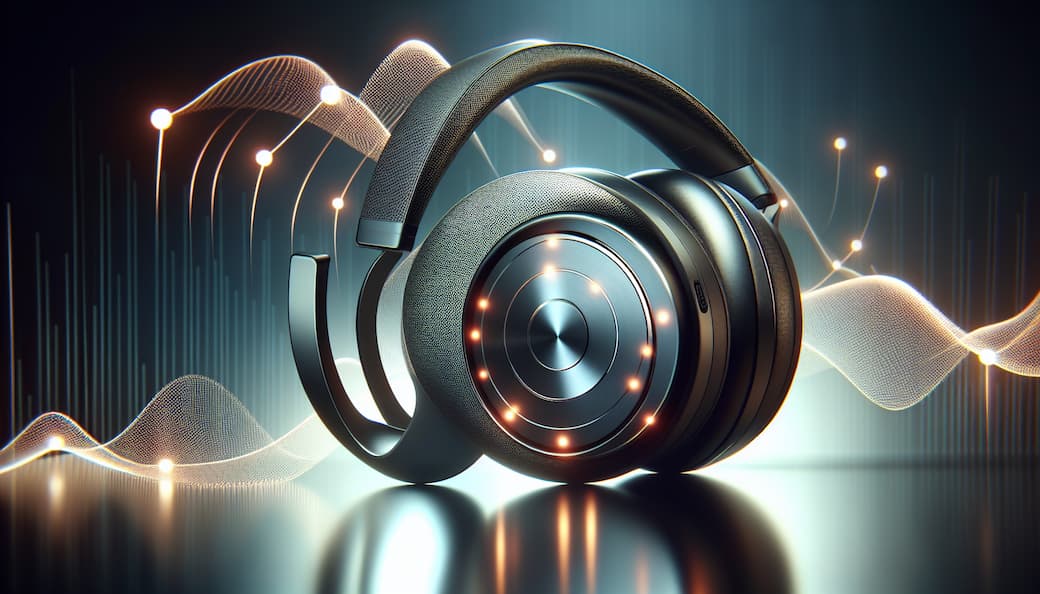
Now that we understand the science and technology behind HRTF, our focus can shift towards enhancing your experience with it. While the auditory cortex plays a significant role in processing HRTF cues within human hearing, individuals have the ability to adapt and relearn spatial sound localization over time within their auditory system.
This means that if you switch to a new audio system or headphones, your brain can adjust and improve spatial hearing abilities.
In order for optimal HRTF experiences, it is important not to let other audio software interfere with its processes. If there are any additional software or enhancements altering sound before reaching HRTFs algorithms, they may compromise effectiveness of this feature.
It is recommended to disable such features on devices/software so as not to hinder an ideal use of spatial sounds.
Choosing the Right Headphones
It is crucial to select the appropriate headphones in order to fully optimize your HRTF experiences. It is recommended to use open-back headphones as they have a positive impact on sound directionality and greatly improve one’s ability to hear and perceive 3D sound.
In-ear headphones are also highly suitable due to their placement and frequency of transducers being similar during playback as when microphones were used for recording, allowing them to closely interact with the listener’s external ears and enhance overall quality of perception.
Enabling HRTF in Applications
In order to incorporate HRTF into an application, developers typically include an audio engine that supports HRTF processing or integrate a plugin into the software. As a user, enabling HRTF usually involves accessing the audio settings within the program and selecting options or modes related to it.
It is important to note that effective implementation of HRTF also requires proper encoding of soundtracks and sounds in a way that allows for utilization by HRTF technology.
Avoiding Conflicting Audio Processing
It is important to note that conflicting audio processing can greatly impact the effectiveness of HRTF. This includes digital sound editing programs and virtual surround sound features, for example, which can create a distorted perception of sound.
For an optimal experience with HRTF, it is recommended to disable any other enhancements related to spatial or surround sound on both software and devices used for audio playback.
Real-World Examples of HRTF in Action
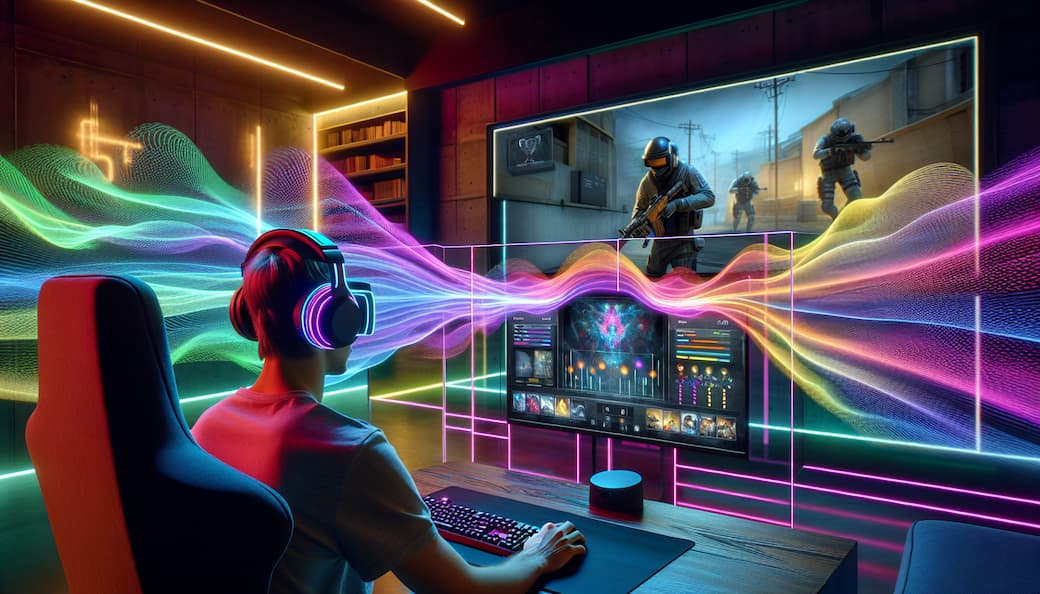
The practical applications of HRTFs are evident in popular games like CS:GO and Valorant, as well as Dolby Atmos technology. These examples demonstrate the impact that HRTF can have on our auditory experiences by providing an immersive audio experience with accurate directionality for sounds such as footsteps and gunshots.
For instance, players in first-person shooters like CS:GO benefit from this technology which allows them to hear binaural cues within the game more clearly and accurately determine their location based on sound.
Similarly, PUBG also utilizes HRTF to enhance gameplay by aiding players in pinpointing opponents through directional audio clues. These real-world scenarios highlight how effective implementation of HRTFs can greatly improve our overall listening experiences.
Valorant and HRTF
In Valorant, players can utilize HRTF by accessing the Settings menu and selecting ‘Enable HRTF’ under Audio. Once activated, wearing headphones allows for precise audio perception from all directions in-game. This feature enhances a player’s ability to hear and accurately locate sounds and identify sources and frequencies of sound such as footsteps and reloading.
Having this level of accuracy with sound localization is crucial for tactical decision-making and awareness during gameplay. It provides valuable information that aids in determining position and direction at critical moments.
Dolby Atmos and Spatial Sound
Utilizing HRTF, Dolby Atmos technology creates a personalized spatial audio experience for users through headphones by accounting for the unique shape three dimensions of their ears and head.
By incorporating individualized HRTFs, sound objects can be rendered from all directions, including behind the listener model head and ear, surpassing the limitations found in traditional stereo setups.
Summary
In conclusion, the world of HRTFs is a fascinating blend of science and technology. From the unique ways our heads and ears shape how we perceive sound, to the challenges and techniques involved in measuring HRTFs, and the myriad ways they enhance our audio experiences in games, music, and communication technologies – the impact of HRTFs is significant.
Whether you’re a sound enthusiast, a gamer, or just a curious reader, understanding HRTFs not only deepens your appreciation of the audio experiences you enjoy daily, but also opens up a new dimension in the way you perceive sound.
Frequently Asked Questions on HRTF
Should I enable HRTF?
Enabling HRTF in Valorant can greatly enhance your ability to localize sound and improve overall awareness. This advantage allows for easier detection of enemies and the precise identification of different sounds within the game.
By activating this feature, you are giving yourself a significant edge in gameplay when it comes to accurately pinpointing where various sounds originate from.
What is the head-related impulse response?
The utilization of head-related impulse responses (HRIRs) facilitates the construction of virtual acoustic environments, providing precise sound localization and lifelike scene simulation. A comprehensive HRIR database with a fine spatial resolution is crucial for achieving these objectives.
What is HRTF sound localization?
Head-related transfer functions, also known as HRTFs, are used to capture the specific way in which sound interacts with the listener’s head and torso. This is crucial for accurately representing directional cues in audio.
The process of using these HRTFs is called HRTF sound localization and it allows for precise effects based on the listener and directionality within a virtual space or real environment.
Why are HRTFs important in VR and gaming?
HRTFs speakers are important in VR and gaming because they provide accurate 3D sound localization, creating an immersive experience for users.
How can I optimize my HRTF experience?
To improve your HRTF encounter, it is important to select appropriate headphones and activate HRTF in applications while also avoiding any conflicting audio processing. This will effectively heighten the immersive quality of sound.
Back to the BlogRelated Articles
Dynamic Head Tracking - Spatial Audio for 3D Surround Headphones
Head Tracked Spatial Audio vs Fixed: Mix with the Head-Locked Stereo
Ambisonic for Virtual Reality and 360° Soundfield
VRTonung learning - THE spatial audio course for immersive media
Apple VR headset - All Spatial Audio features from Vision pro